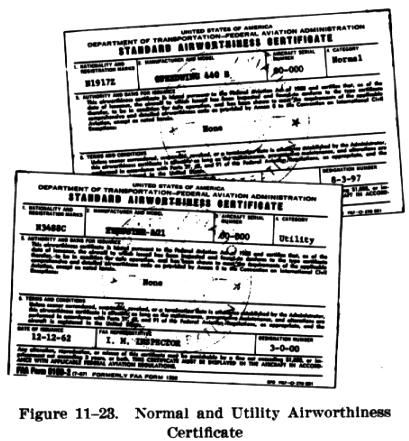Accelerated Maneuver Stalls
Accelerated Maneuver Stalls
Though the stalls just discussed normally occur at a specific
airspeed, the pilot must understand thoroughly that all stalls result solely
from attempts to fly at excessively high angles of attack. It will be recalled
from previous discussions that during flight the angle of attack of an
airplane wing is determined by a number of factors, the most important
of which are: (1) the airspeed, (2) the gross weight of the airplane, and
(3) the load factors imposed by maneuvering.
At the same gross weight, airplane configuration, and power
setting, a given airplane will consistently stall at the same indicated
airspeed if no acceleration is involved. The airplane will, however, stall
at a higher indicated airspeed when excessive maneuvering loads are imposed
by steep turns, pullups, or other abrupt changes in its flightpath. Stalls
entered from such flight situations are called "accelerated maneuver stalls,"
a term which has no reference to the airspeeds involved.
 |
Stalls which result from abrupt maneuvers tend to be more rapid, or
severe, than the unaccelerated stalls, and because they occur at higher
than normal airspeeds they may be unexpected by a pilot who has not experienced
and understood them. Failure to take immediate steps toward recovery when
an accelerated stall occurs may result in a complete loss of flight control,
notably power on spins.
It must be emphasized here that FAR Part 23, "Airworthiness Standards:
Normal, Utility, and Acrobatic Airplanes," under which light planes are
type-certificated, may prohibit the performance of these maneuvers (Fig.
11-23).
For airplanes certificated in the Normal category, acrobatic maneuvers,
including spins, are not authorized. Acrobatic flight means an intentional
maneuver involving an abrupt change in an aircraft's attitude, an abnormal
attitude, or abnormal acceleration not necessary for normal flight. For
Utility category airplanes, limited acrobatics are authorized; however,
information about the |
authorized maneuvers shown in the type certification flight tests must
be available to the pilot, together with recommended entry speeds. No other
accelerated maneuver is authorized.
Accelerated maneuver stalls, therefore, should not be performed in any
airplane which is prohibited from such maneuvers by its type certification
restrictions. If they are permitted, they should be performed with a bank
of approximately 45 degrees and in no case at a speed greater than the
airplane manufacturer's recommended airspeeds, or the design maneuvering
speed specified for the airplane. The design maneuvering speed is the maximum
speed at which the airplane can be stalled, or the controls deflected fully,
without exceeding the airplane's limit load factor. At or below this speed
the airplane will usually stall before the limit load factor can be exceeded.
Those speeds must not be exceeded because of the extremely high structural
loads which are imposed on the airplane, especially if there is turbulence.
In most cases these stalls should be performed at no more than 1.2 times
the normal stall speed.
The objective of demonstrating accelerated stalls is not
to develop competency in setting up the stall, but rather to learn how
they may occur and to develop the ability to recognize such stalls immediately,
and to take prompt, effective recovery action. It is important that recoveries
be made at the first indication of an imminent stall, or immediately after
the stall has fully developed; a prolonged stall condition should never
be allowed.
An airplane will stall during a coordinated steep turn
exactly as it does from straight flight, except that the pitching and rolling
actions tend to be more sudden. If the airplane is slipping toward the
inside of the turn at the time the stall occurs, it tends to roll rapidly
toward the outside of the turn as the nose pitches down because the outside
wing stalls before the inside wing. If the airplane is skidding toward
the outside of the turn, it will have a tendency to roll to the inside
of the turn because the inside wing stalls first. If, however, the coordination
of the turn at the time of the stall is accurate, the airplane's nose will
pitch away from the pilot just as it does in a straight flight stall, since
both wings stall simultaneously.
The accelerated stall demonstrations that follow are entered
by establishing the desired flight attitude, then smoothly, firmly, and
progressively increasing the angle of attack until a stall occurs. Because
of the rapidly changing flight attitude, sudden stall entry, and possible
loss of altitude, it is extremely vital that the area be clear of other
aircraft and the entry altitude be adequate for safe recovery.
